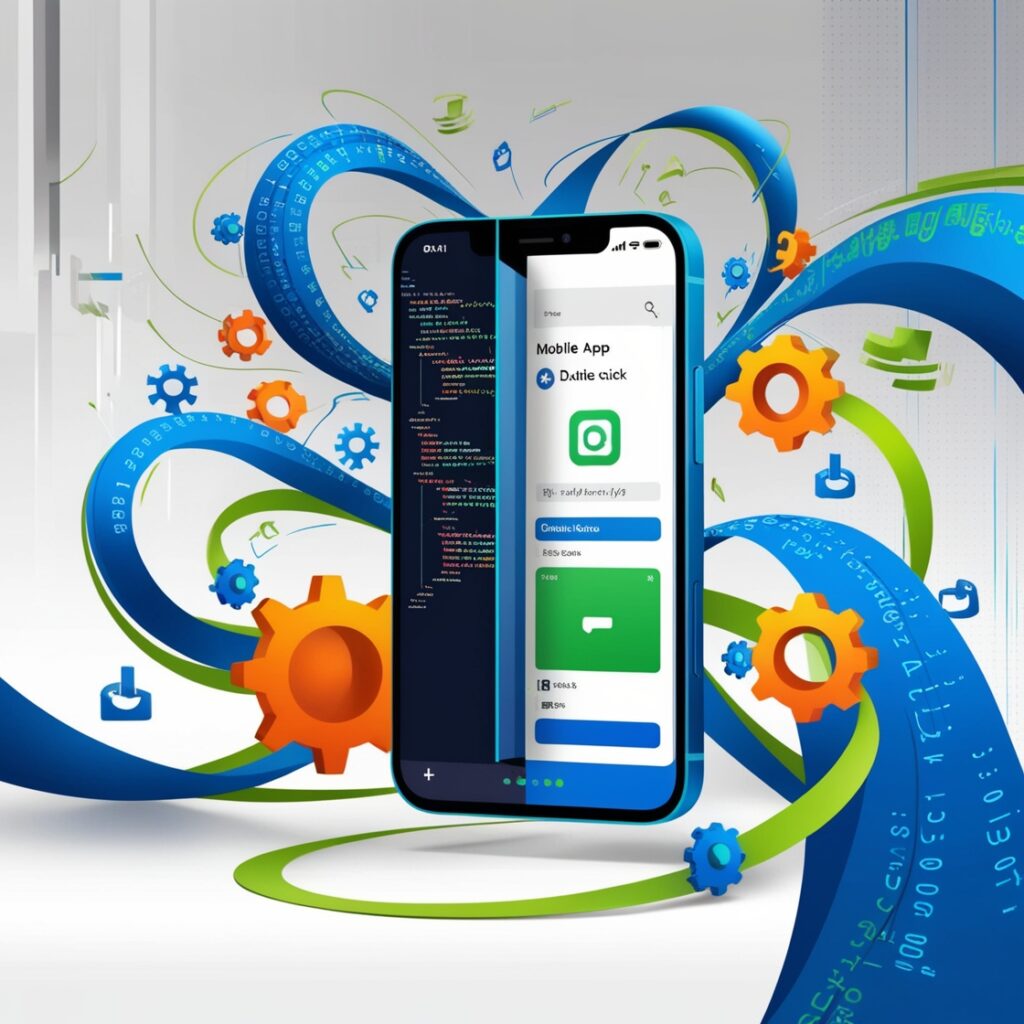Building mobile apps no longer requires deep programming expertise. Thanks to low-code platforms, even non-developers can create functional and visually appealing apps with ease. In this article, we’ll explore how to build mobile apps with low-code platforms and review some of the best tools available in 2024.
What Are Low-Code Platforms?
Low-code platforms are development tools that simplify app creation by providing a visual interface and drag-and-drop functionality. Instead of writing lines of code, users configure app elements visually, significantly speeding up the development process.
Benefits of Low-Code Platforms
1. Ease of Use: No need for advanced programming skills.
2. Time Efficiency: Build apps quickly with pre-built templates and components.
3. Cost-Effective: Reduces the need to hire developers or outsource.
4. Customization: Many platforms allow advanced users to tweak apps with custom code.
How to Build Mobile Apps with Low-Code Platforms
Step 1: Define Your App’s Purpose
Before choosing a platform, identify your app’s primary function:
• Is it for e-commerce, education, or business operations?
• Does it need to integrate with third-party services like payment gateways or CRMs?
Step 2: Choose the Right Low-Code Platform
Here are some of the best low-code platforms for building mobile apps:
1. Adalo
• Features:
• Drag-and-drop interface.
• Pre-built integrations with Stripe, Zapier, and more.
• Real-time app previews.
• Best For: Beginners creating simple apps.
• Pricing: Free plan available with basic features.
2. OutSystems
• Features:
• Enterprise-grade app development.
• AI-powered suggestions for workflows.
• Extensive integrations.
• Best For: Businesses looking for scalable, professional apps.
• Pricing: Free for small apps; premium plans for enterprises.
3. Glide
• Features:
• Turn spreadsheets into apps.
• No coding required.
• Highly customizable UI components.
• Best For: Data-driven apps like CRMs and inventory trackers.
• Pricing: Free for basic apps; affordable premium options.
4. Mendix
• Features:
• Cloud-native platform.
• Real-time collaboration tools.
• Support for both web and mobile apps.
• Best For: Advanced users needing customizations.
• Pricing: Free trial available; paid plans for advanced features.
5. Thunkable
• Features:
• Ideal for Android and iOS apps.
• Visual design tools with extensive component libraries.
• One-click app publishing.
• Best For: Creative individuals and educators.
• Pricing: Free plan with limited features; affordable premium tiers.
Step 3: Design Your App
Most low-code platforms provide:
• Templates: Ready-to-use designs tailored to specific industries.
• Customization Tools: Change colors, fonts, and layouts to match your branding.
Step 4: Add Features and Integrations
Low-code platforms allow you to integrate essential features without coding:
• User Authentication: Add sign-up and login options.
• Payment Gateways: Enable in-app purchases or subscriptions.
• APIs: Connect third-party tools like Google Maps, CRMs, or social media platforms.
Step 5: Test Your App
Most platforms offer:
• Real-Time Previews: Test how your app functions on different devices.
• Debugging Tools: Identify and fix potential issues.
Step 6: Publish Your App
Once the app is ready:
• Export it as an APK (Android) or IPA (iOS) file.
• Submit it to app stores like Google Play or the Apple App Store.
• Promote your app to your target audience.

Key Features to Look for in Low-Code Platforms
When choosing a platform, prioritize:
1. Ease of Use: Intuitive interface for smooth navigation.
2. Scalability: Ability to grow with your app’s needs.
3. Integrations: Support for APIs and third-party tools.
4. Customization: Flexibility to add custom code if needed.
5. Support and Documentation: Reliable resources to assist in development.
Comparison of Low-Code Platforms
| Platform | Best For | Pricing | Key Features |
| Adalo | Beginners | Free, paid plans | Simple interface, pre-built features |
| OutSystems | Enterprise apps | Free, enterprise | AI suggestions, advanced workflows |
| Glide | Data-driven apps | Free, premium | Spreadsheet integration |
| Mendix | Professional developers | Free trial, paid | Cloud-native, real-time collaboration |
| Thunkable | Creative app projects | Free, premium | Extensive component library |
Benefits of Using Low-Code Platforms in 2024
1. Faster App Deployment: Develop apps in days rather than months.
2. Reduced Costs: Save on hiring professional developers.
3. Increased Accessibility: Anyone with basic tech knowledge can build apps.
4. Enhanced Collaboration: Teams can collaborate in real time during app creation.
Conclusion
Building mobile apps with low-code platforms has never been easier. These tools empower individuals and businesses to create high-quality apps without extensive programming knowledge. Whether you’re launching a simple app for personal use or a scalable solution for your business, low-code platforms provide the flexibility and power to bring your ideas to life.
Start exploring the platforms mentioned above and turn your app vision into reality today!




Reading your article helped me a lot and I agree with you. But I still have some doubts, can you clarify for me? I’ll keep an eye out for your answers.
hey tapfantasy, I would really like to clarify you feel free to ask us any question we will surely try to answer it.
Thank you for your sharing. I am worried that I lack creative ideas. It is your article that makes me full of hope. Thank you. But, I have a question, can you help me?
Can you be more specific about the content of your article? After reading it, I still have some doubts. Hope you can help me.
Thanks for sharing. I read many of your blog posts, cool, your blog is very good.
Can you be more specific about the content of your article? After reading it, I still have some doubts. Hope you can help me. https://accounts.binance.com/en-NG/register-person?ref=JHQQKNKN
Your point of view caught my eye and was very interesting. Thanks. I have a question for you.
I don’t think the title of your article matches the content lol. Just kidding, mainly because I had some doubts after reading the article.